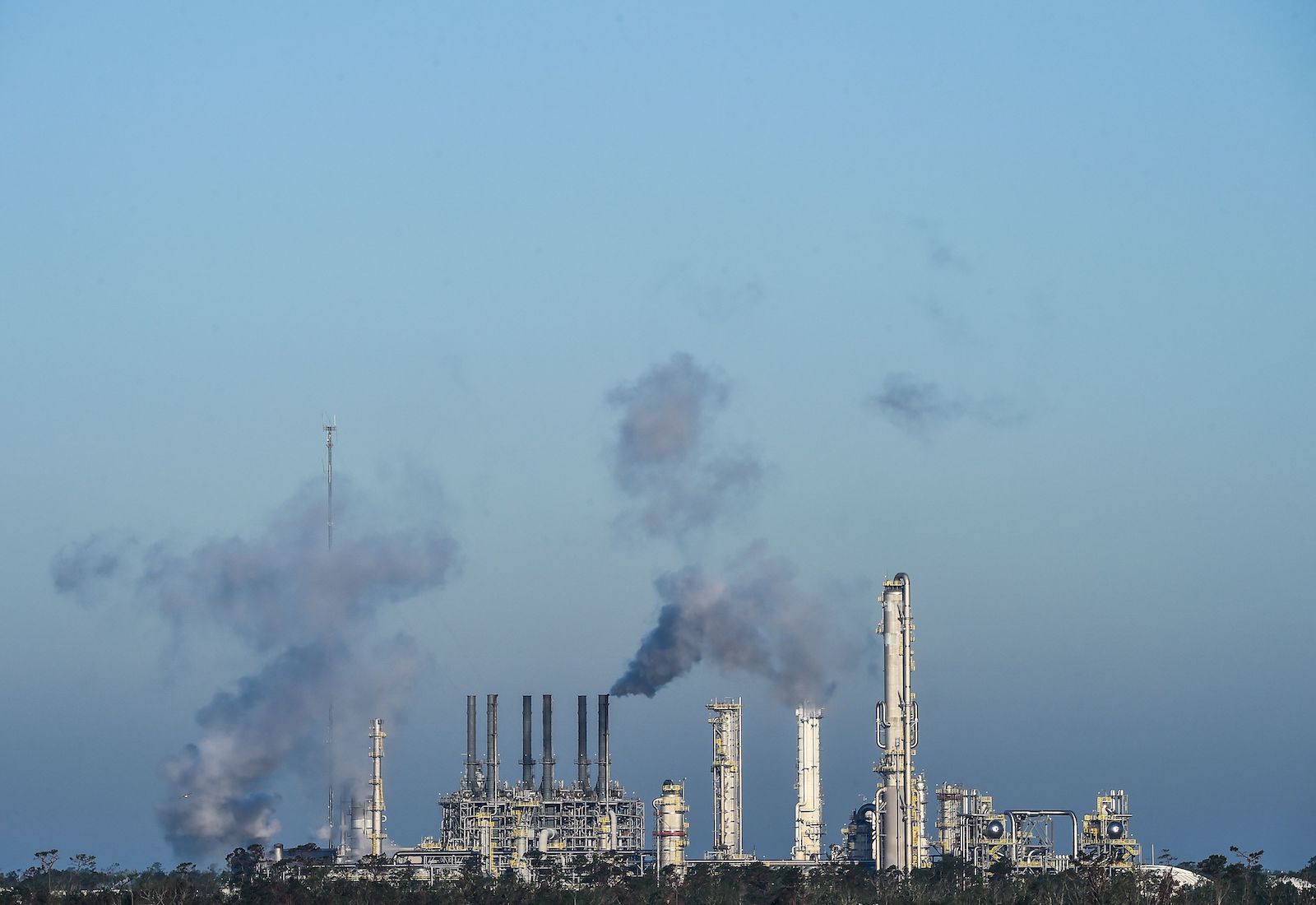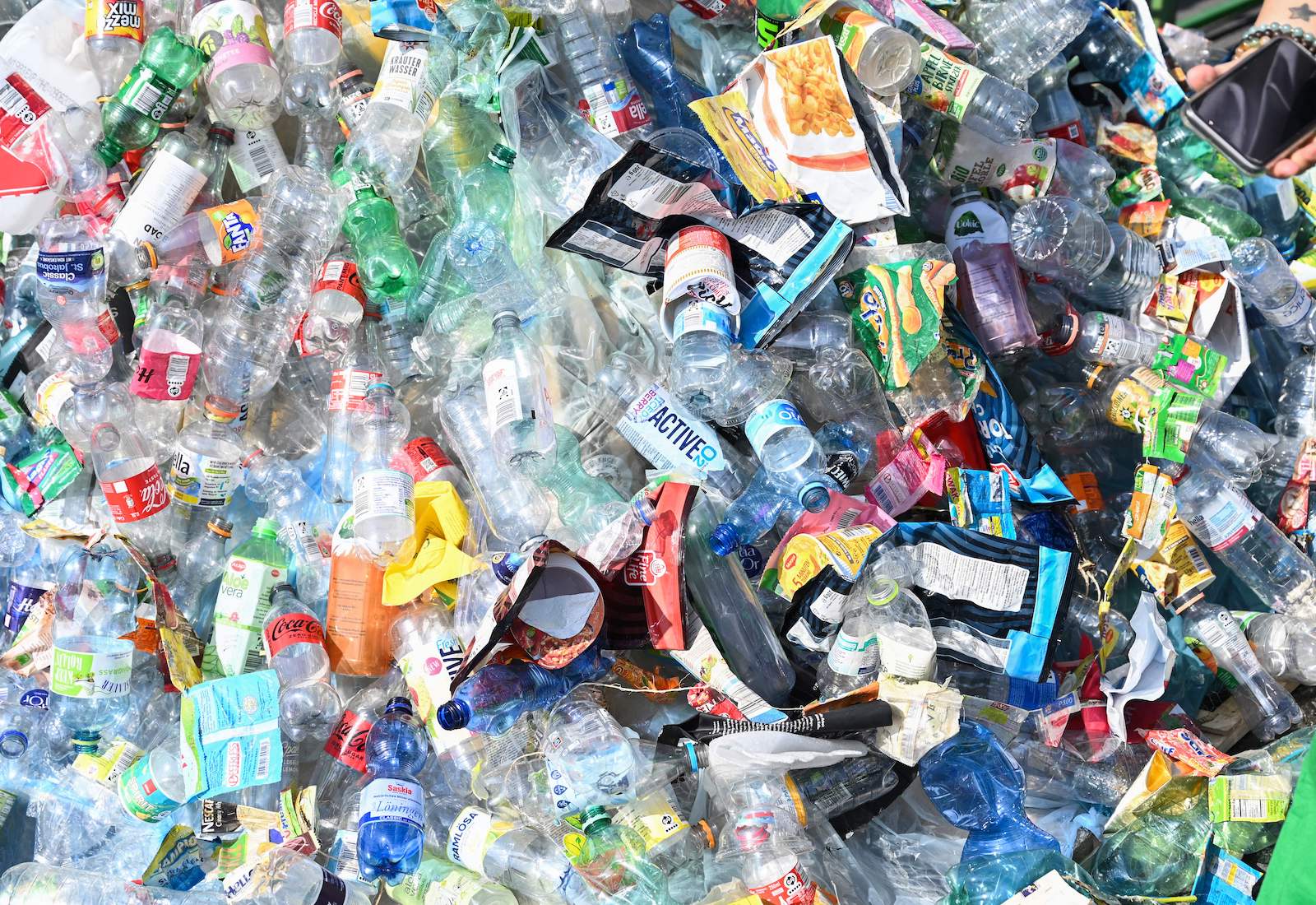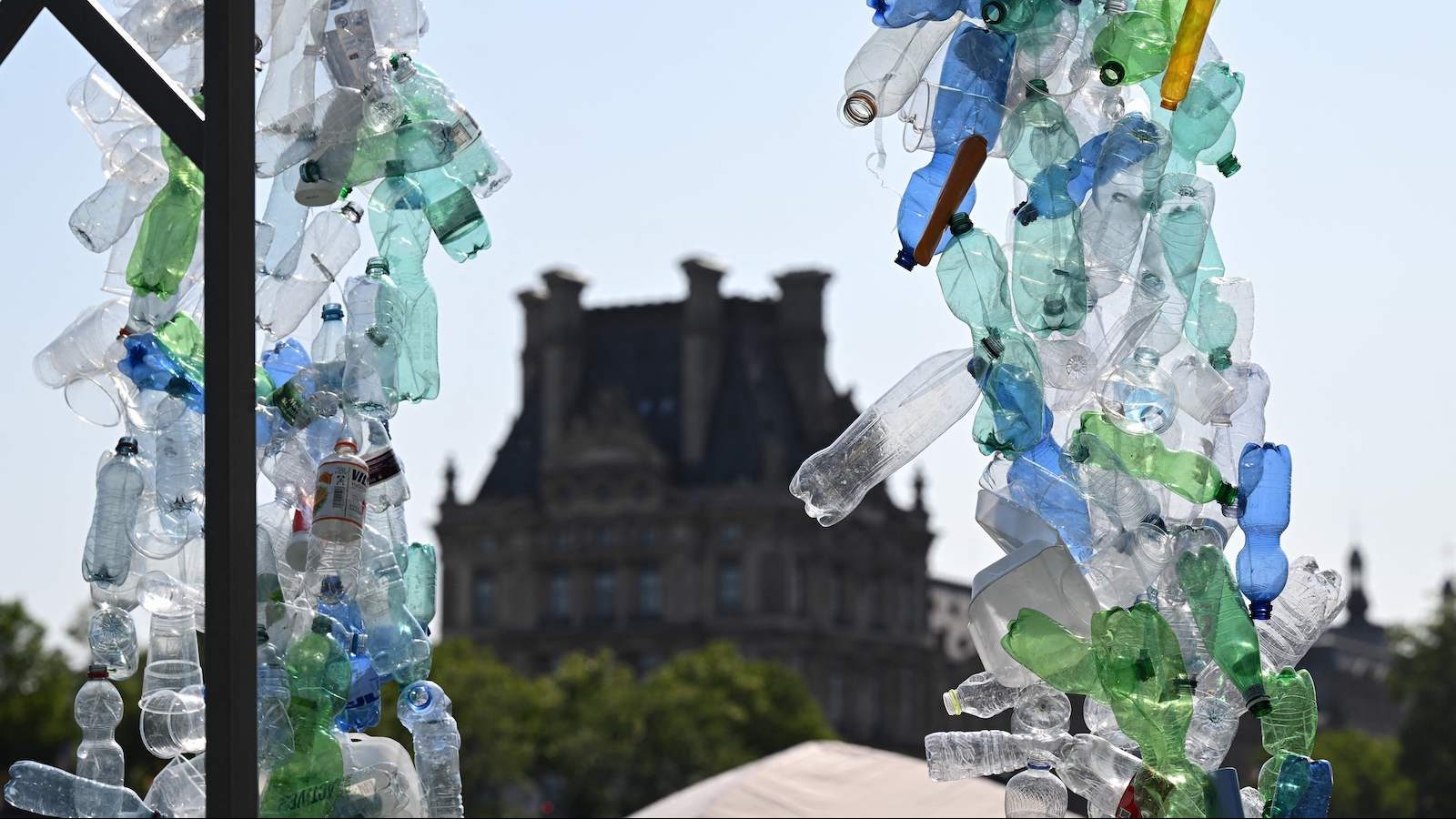During the second round of negotiations for a global plastics treaty in Paris this week, diplomats have clashed over competing priorities — including the role of recycling and how to address toxic chemicals. But some experts are arguing that one issue in particular should anchor the ongoing talks: climate change.
“It’s not just a plastics crisis; it’s a climate crisis,” said Kristen McDonald, senior director of the China program for the nonprofit Pacific Environment. “Everyone should be coming away from the global plastics treaty table this week understanding that.”
Indeed, plastics are made from fossil fuels and cause greenhouse gas emissions at every stage of their life cycle. The plastic industry’s global carbon footprint in 2020 was 1.3 billion metric tons — twice as big as Canada’s — and it’s expected to grow as fossil fuel companies seek to offset declining demand for oil and gas used in the power and transportation sectors.
Now, a new report from Pacific Environment urges world leaders to center that climate connection as they design a legally binding treaty on plastics — by the end of 2024, if everything goes according to schedule. It calls for the diplomats involved in the plastic talks to adopt a Paris Agreement-style target of limiting global warming to 1.5 degrees Celsius (2.7 degrees Fahrenheit), and says that doing so will require a 75 percent cut in global plastic production by 2050.
It’s not the first time an environmental group has highlighted the link between plastics and climate change. Back in 2019, the nonprofit Center for International Environmental Law published a landmark analysis estimating that plastic’s annual emissions could grow to 2.75 billion metric tons annually by 2050. More recently, the nonprofit advocacy group Beyond Plastics calculated that the U.S. plastics industry is on track to produce more climate pollution per year than domestic coal-fired power plants by 2030.
Pacific Environment’s report, however, is one of the first to chart a path toward mitigating that climate impact in line with international temperature targets. It starts with the idea that there’s a global carbon budget of 400 billion metric tons, the cumulative amount of carbon dioxide-equivalent greenhouse gases that the world can emit between now and 2050 if it wants a two-thirds chance of limiting global warming to 1.5 degrees C. Drawing from a November 2022 report commissioned by the nonprofit Zero Waste Europe, the report assigns the global plastics industry a 4 percent share of the carbon budget — about the same as the fraction of global emissions the industry currently generates. It works out to a total of 16 billion metric tons, taking into account unavoidable plastic production for things like medicine, cars, and buildings.

Sixteen gigatons may sound like a lot, but it’s much less than what the petrochemical industry is projected to emit if it continues business as usual. The industry’s current plans to expand plastic production could cause cumulative emissions of some 65 billion metric tons by 2050. According to Zero Waste Europe, technological solutions like increasing recycling rates and switching to plant-based plastics would only lower that number to about 50 billion metric tons, exceeding the plastics-specific carbon budget by more than 200 percent.
Thus, environmental groups argue that a dramatic reduction in plastic production is needed to curb the material’s climate impact. Zero Waste Europe put the number at 75 percent by 2050, and that recommendation is repeated in Pacific Envionment’s new report. Pacific Environment gets more specific, however, by calling for a total phaseout of single-use plastics — which account for 44 percent of all plastic production — by 2040, and for an end to virgin plastic production by 2030. These two actions alone could reduce plastic sector greenhouse gas emissions by 71 percent by 2050.
Incidentally, they could also begin to address plastics’ other impacts — like the damage plastic pollution inflicts on marine ecosystems and the release of toxic chemicals from plastic products. “Guess what, if you reduce plastics by 75 percent you also get a lot of benefits for those other targets,” McDonald said.
Most of the rest of that 75 percent reduction could be achieved by implementing green production techniques and eliminating plastic incineration. Many other environmental groups have also denounced the latter waste management strategy.
“I’m very worried that the petrochemical industry is pushing incineration and burning in cement kilns as a solution,” said Judith Enck, a former regional administrator for the U.S. Environmental Protection Agency and the current president of the advocacy group Beyond Plastics. Emails recently uncovered by the nonprofit Friends of the Earth show that waste incinerators are pitching their operations as climate-friendly in order to secure federal funding from the Inflation Reduction Act, even though incineration is projected to account for one-fifth of plastic’s climate footprint by 2050 if current trends continue.

One industry “marketing ploy,” Enck said, involves so-called chemical recycling, in which plastics are melted and — more often than not — burned as fuel.
Instead of burning discarded plastic, McDonald said unmitigable plastic waste should be dealt with in landfills that are outfitted with technologies to reduce methane emissions and located near the source of waste, to prevent plastic trash from being exported to other communities. Any necessary plastic production, she added, should use recycled or plant-based materials and be powered by clean energy.
Steven Feit, a senior attorney and legal and research manager for the Center for International Environmental Law, lauded the report. But for the global plastics treaty, he warned negotiators against focusing too much on the specific numbers behind plastic’s carbon budget. “When you choose numbers, then you open up a conversation about assumptions,” he said, like how to fairly distribute the carbon budget among global industries. This could lead to time-consuming debates that delay the talks’ progress — and environmental groups say there have already been enough of those.
Procedural issues, like whether to make decisions by consensus or majority, stalled progress during the first round of treaty negotiations last fall and ate up another two days of this week’s discussions. With three weeklong sessions remaining, one frustrated delegation noted that there will only be 15 more days of talks after Friday before a final treaty is due at the end of 2024.
Pacific Environment, however, remains optimistic. The organization presented its report at the negotiations this week as part of a side panel on plastic production, one of several informational sessions that have been running in parallel with the negotiating sessions. “Many panelists echoed agreement with our findings,” Gwen Dobbs, Pacific Environment’s campaigns communications director, said in a statement. “[T]he reduction message was reiterated and not contested during the question-and-answer part of the program, which is a good sign that we are making headway on substance.”




